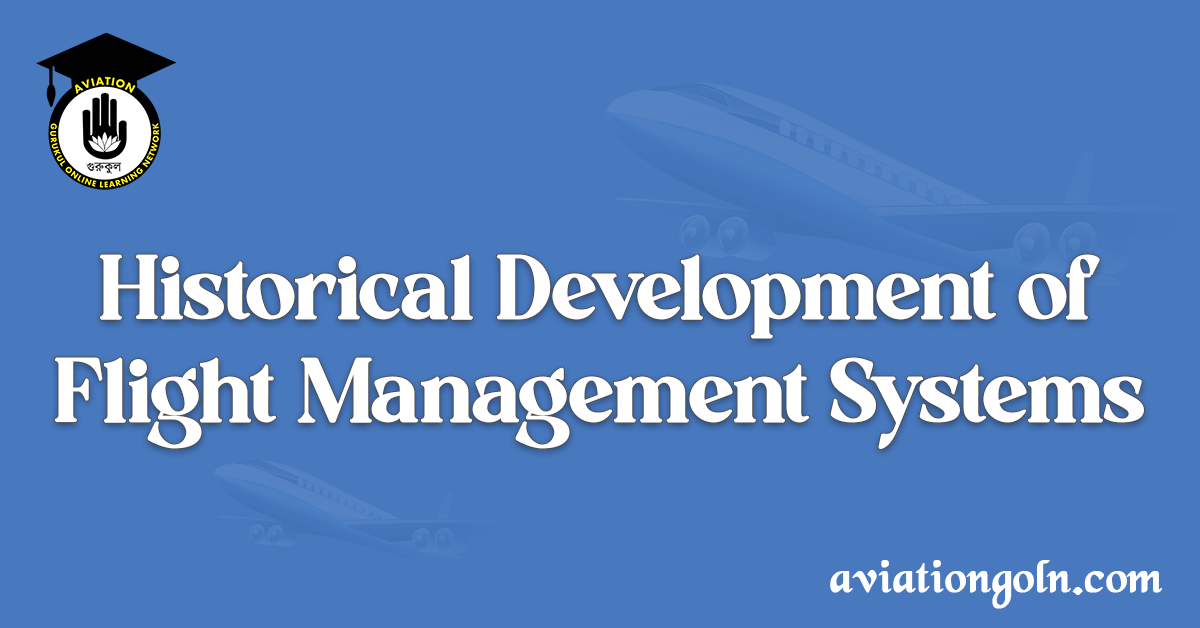The ability to navigate the skies has, for over a century, fascinated and compelled humanity to push technological boundaries. From the very first powered flight by the Wright brothers in 1903, aviation technology has made leaps and bounds in a relatively short period of time. A key development in modern aviation technology is the Flight Management System (FMS). This system represents an integration of multiple technologies to automate and optimize aircraft flight. This article seeks to shed light on the historical progression of FMS, marking key developments and innovations over the years.
Historical Development of Flight Management Systems (FMS)

Beginnings: From Dead Reckoning to Celestial Navigation
The inception of flight navigation was anything but advanced. In the early 1900s, pilots relied on rudimentary methods such as “dead reckoning” which involved calculating current position based on a previously known position, speed, time, and estimated direction. This method was often coupled with visual references, such as landmarks.
By the 1930s, as long-haul flights and night-time operations became more common, celestial navigation became a vital tool. Pilots would use sextants, similar to what sea navigators used, to determine their position based on the stars. However, this method had its limitations, especially in cloudy conditions or at specific times of the year when certain celestial bodies weren’t visible.
Radio Navigation: A Leap Forward
The advent of radio technology in the 1920s and 1930s offered a new avenue for flight navigation. Ground-based transmitters emitted signals that aircraft could pick up, allowing pilots to determine their bearing and sometimes their distance from the station. Systems like the Lorenz system in Germany and the Instrument Landing System (ILS) in the United States allowed for more precise navigation, particularly during landing approaches.
After World War II, the VHF Omnidirectional Range (VOR) system became widespread. VOR stations, scattered around the world, emit radio waves in all directions. Aircraft equipped with VOR receivers can determine their bearing relative to the station, providing another layer of navigation capability.
Inception of Flight Management Systems
The 1960s and 1970s heralded the dawn of computer technology in aircraft. The first-generation FMS incorporated these emerging technologies. These systems could store multiple waypoints and automatically compute a flight path between them. They were essentially glorified calculators but marked the beginning of a paradigm shift from manual to automated in-flight navigation.
Integration of GPS
By the late 1970s and early 1980s, the Global Positioning System (GPS) was in development, promising unprecedented navigational accuracy. This satellite-based navigation system allowed aircraft to determine their position with pinpoint accuracy anywhere in the world. Once GPS became operational in the 1990s, it was quickly integrated into the FMS, revolutionizing flight navigation. With GPS, FMS could now provide real-time data, update flight paths instantaneously, and offer enhanced safety features.
Enhanced Flight Management Systems
Modern FMS systems, with the aid of high-speed computers and intricate software, are not only focused on navigation. They integrate with other aircraft systems to optimize performance, fuel efficiency, and improve safety. Some advancements include:
- Performance Optimization: Modern FMS can compute the most efficient altitude and speed for the aircraft based on current weight, weather conditions, and other factors.
- Predictive Features: Advanced FMS offer predictive capabilities, warning pilots of potential terrain conflicts or airspace intrusions.
- Integration with Air Traffic Control: As airspaces become busier, FMS now often include capabilities for real-time communication and coordination with air traffic control systems.
Fly-by-wire and Autopilot Systems
While FMS is primarily about navigation and performance optimization, it closely integrates with autopilot and fly-by-wire systems in modern aircraft. Autopilot can follow the route set by the FMS, making adjustments as needed based on FMS data. Fly-by-wire systems, which electronically interpret pilot inputs and control aircraft surfaces, can also be informed by FMS data to optimize flight performance.
Future Prospects: Artificial Intelligence and Beyond
The future of FMS is bound to see further integration with emerging technologies:
- Artificial Intelligence (AI): AI can be used to enhance the predictive capabilities of FMS, optimizing routes in real-time based on a multitude of factors. For instance, AI can predict and adjust flight paths to avoid turbulent weather zones.
- Integration with Global Air Traffic Systems: As efforts are made to create a more cohesive global air traffic system, FMS will be a central player, offering real-time data sharing and collaborative decision-making.
- Enhanced Safety Features: With the integration of more sensors and real-time data analysis, FMS will play an even larger role in ensuring flight safety, potentially predicting and preventing accidents before they occur.
Conclusion
From the rudimentary methods of dead reckoning and celestial navigation to the sophisticated computer systems of today, the history of flight navigation and management is a testament to human ingenuity and the relentless pursuit of safety and efficiency. The Flight Management System stands as a beacon of this progress, encapsulating over a century of innovation in its circuits and code. As technology continues to advance, there’s no doubt that the FMS will evolve with it, ushering in new eras of flight safety, efficiency, and possibilities.
